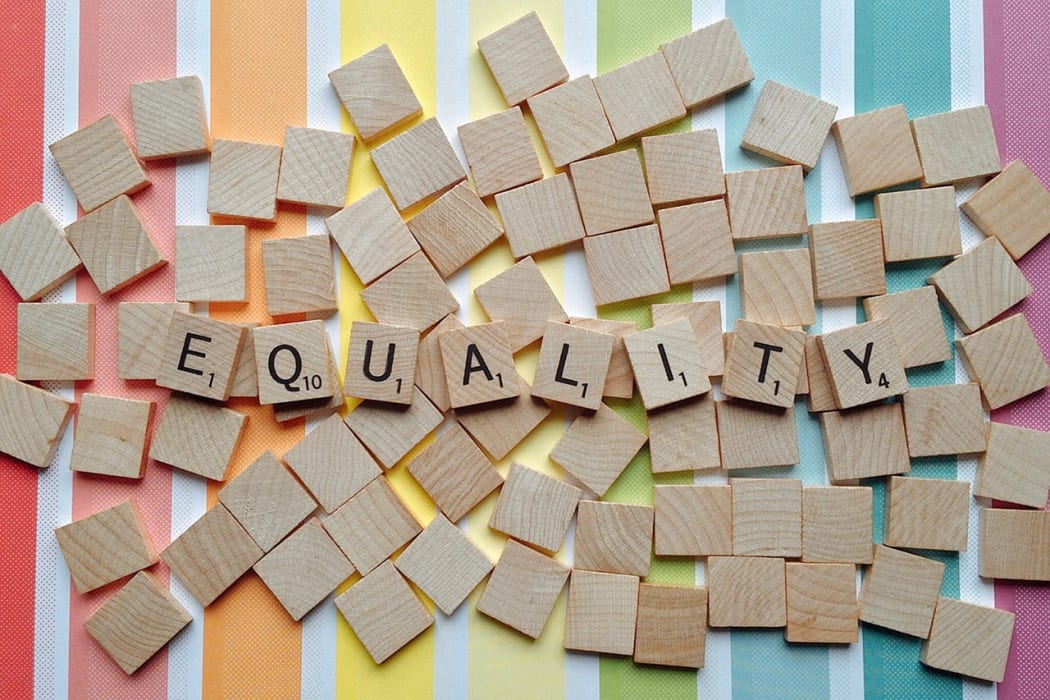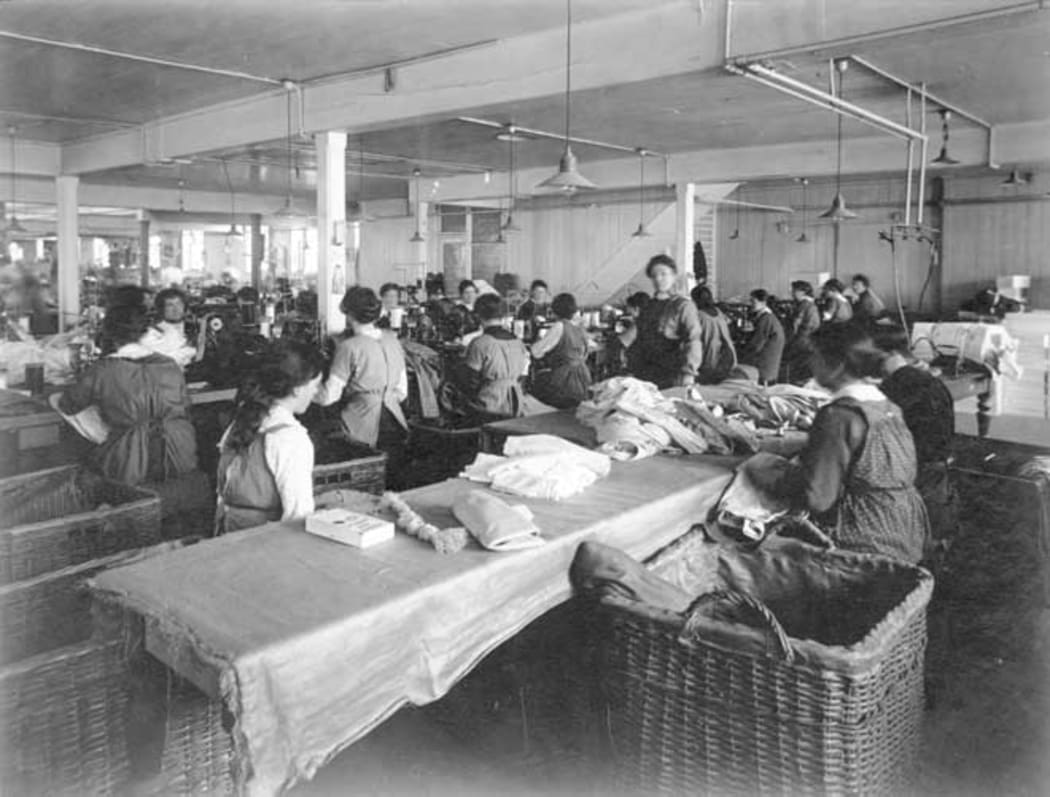Girls can do anything ... or so the saying goes.
But although women now work in industries previously dominated by men, they still don’t have equal footing in society. Nowhere is this clearer than in the gender pay gap, which reflects where women are really at, and how their work is perceived and valued by society.

Women today are still fighting the same fight Photo: Creative Commons
Subscribe free to Beyond Kate on iPhones: Apple Podcasts, RadioPublic or Spotify. On Android phones: RadioPublic, Spotify and Podbean.
This year, teachers and nurses have taken strike action as they demand higher wages. And now, midwives are fighting for better working conditions and pay.
But why are they still fighting the same fight - one that appears to be ongoing and where there’s no apparent end in sight?
One of the problems that hasn’t really been talked about when these stories of pay parity hit the media headlines is the way these jobs have been historically constructed as "gendered" or feminised professions that were performed mostly by women.
From the late 19th century, New Zealand women began increasingly working outside the domestic environment. Domestic service roles were not appealing to young women who were moving towards a more egalitarian way of thinking. And besides, domestic service jobs involved excessively long hours and very little pay.

The New Zealand Clothing Factory began work in 1873 in Dunedin. It was owned by Bendix Hallenstein, who set up a chain of discount clothing stores and the Drapery Importing Company (DIC) to sell the clothing produced in his factory. After initial difficulties, Hallenstein’s clothing factory... Photo: All Rights Reserved. Ministry of Culture and Heritage.
New Zealand women wanted independence, as well as to be more active in public life.
But entering the workforce came with barriers. One of those was a lack of provision for female workers.
“A women’s toilet would be separated from the men’s toilet just by a calico sheet, or the women would have to walk through the men’s toilets to get to their own toilet,” says Te Papa history curator Kirsty Ross.
And, that is if there was even a toilet available for women in the first place.
New Zealand during the late 1800s, when women won the right to vote, was a place that was still largely clinging to Victorian values. Women in the workplace created a great deal of tension and questions around how they would retain their respectability. Even the simple act of being seen going to the bathroom was perceived as "a reduction in women’s privacy."
It was also a time when the concept of the "male breadwinner" was prevalent, according to University of Otago historian Barbara Brookes, author of a History of New Zealand Women.
“The assumption was that a man should earn enough to support his wife and family. And that becomes part of the award system,” Brookes says.
It also brings into question the differentiation between paid and unpaid work for women, and what is perceived as valid or valuable.

An army of office workers arose during the 20th century to administer a complex economy increasingly based on communications. Photo: Te Ara - All rights reserved
“It’s wrong to imagine that women who were at home raising families didn’t think they were contributing members of society,” says Brookes of women in colonial New Zealand.
She adds that women were very much contributing to social reform through their unpaid efforts. They were actively engaged in community work and volunteered for church organisations. Volunteering was an important way of improving things for growing communities and for New Zealand society as a whole, and it was also how the suffrage movement was mobilised.
But women were interested in working. They took on roles as teachers, and later they began moving into positions that had traditionally been performed by men.
Ross says that by the early 1900s women also entered office roles.
“Women pick up the more mundane, mechanical sides of office work like the typing and shorthand,” she says.
“But the men retain the management, accounting and banking side of things.”
Unsurprisingly, men were keen to hold onto those higher positions and maintain their breadwinner wage. And they would fight for it.
Dentistry would prove to be one of those areas where men were set on keeping women at arm’s length.
“They thought if women started working as dentists they would be paid at a lower rate, so that would undermine their salaries,” says Ross.
But it didn’t stop them from hiring women who were useful in the industry, because they were seen as caring and good with children.
By 1921, the profession trained its first intake of female dental nurses, which meant male dentists could still protect their patch.
The other element that protected men’s salaries was the expectation that women would leave their jobs when they married, so they could start a family.

Virgin Mary and images like this have cemented the role of women as nurturers. Photo: Creative Commons
But what about women today who leave work intermittently to start a family. What problems do they face when they return to work, and how does that impact on their salaries?
Barbara Myers is a Senior Research Lecturer in Management, at Auckland University of Technology. She says that after taking time out to have children women often feel like they are behind and can’t meet promotional measures.
“If a woman can have children, she has to create a whole lot of resources and structures around herself to be able to be on a level playing ground at work,” says Myers.
Many women also opt to return to part-time work, and this creates another barrier for women in the workforce. According to Myers, it disadvantages a woman’s ability to accumulate brownie points and climb the career ladder.
Being acknowledged for your work and level of skill is important in any job, and having the opportunity to grow within it is also important. But unseen issues within some industries, especially those dominated by men, can make a job more challenging. And women often leave roles where they feel their contributions are unrecognised.
Claire Todd has been working as an architect for Studio8, in Wellington’s Houghton Bay. She is now part-time, after having two children. But while her job allows for flexibility, she hasn’t necessarily felt valued when she’s on location.
“I’ve got a memory of managing a job and getting tenders ... [and] the builder came in and shook my male colleague’s hand and not my hand,” she says.
After that situation, Todd was reluctant to work with that particular builder, who also addressed most of his questions towards her male colleague. And she was shocked that even after an introduction she was made to feel completely invisible.
“I didn’t want to deal with disrespect, or not being listened to, or having to have a male colleague speak on my behalf,” she says.
Find out more in the final episode of Beyond Kate which investigates gendered professions, the way women are perceived when they’re assertive, and the barriers that still exist 125 years after women gained the right to vote in New Zealand.

